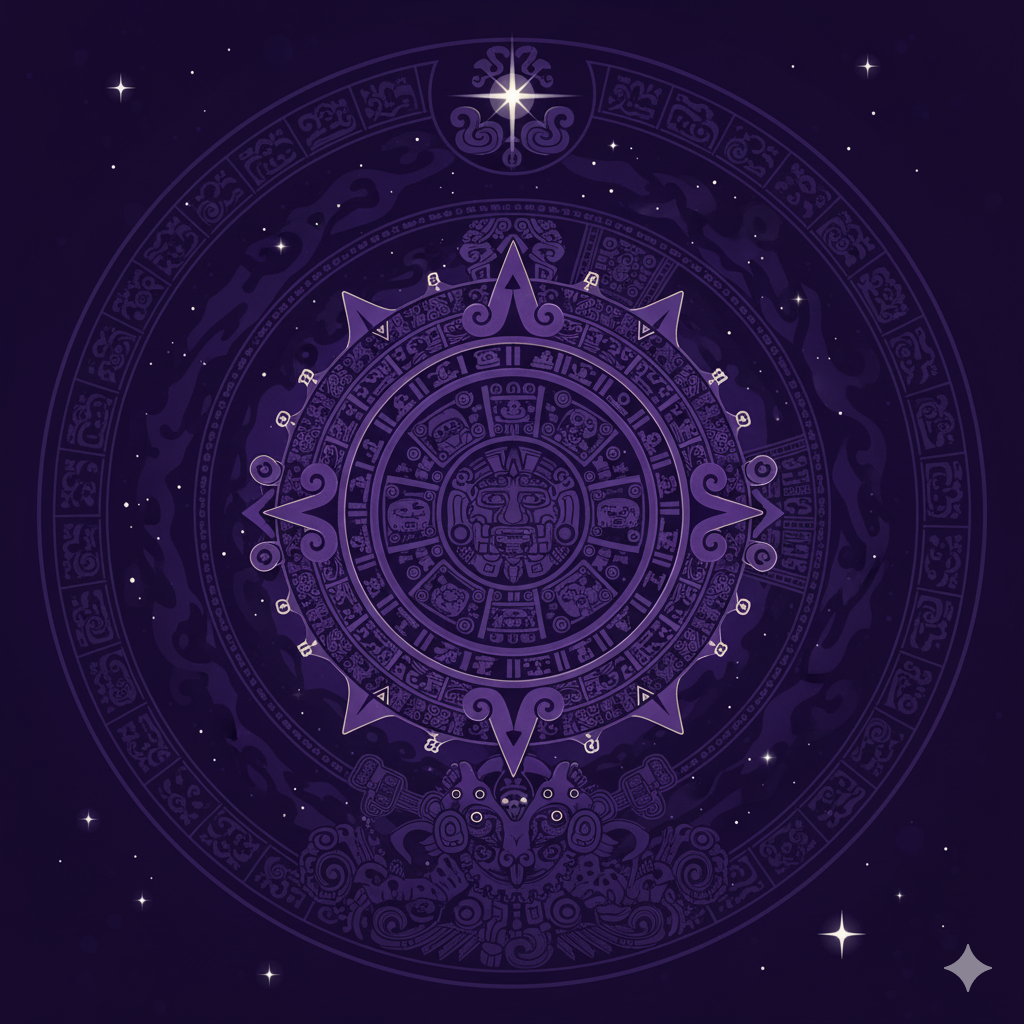The Ancient Mayan Calendar 📅
The Mayan calendar is one of the most sophisticated and intricate timekeeping systems ever developed. Far exceeding a simple count of days, it was a complex network of interlocking cycles used not only to track astronomical movements but also to predict the future and organize religious and political life. The Maya viewed time as cyclical, with events repeating and influencing the present.
The Three Interlocking Calendars
The Mayan system wasn’t a single calendar, but rather three distinct, synchronized cycles that governed different aspects of life and divination.
1. The Tzolkin (Sacred Calendar)
The Tzolkin (or Tzolk’in) is the sacred calendar, a ritual cycle of 260 days.
- Structure: It consists of two smaller, interlocking cycles that run concurrently:
- 13 Numbers (Tones): Numbered 1 through 13.
- 20 Day Names (Signs): Each day is assigned one of 20 names (e.g., Imix, Ik, Akbal).
- The Cycle: A specific day date is created by combining a number and a name (e.g., 1 Imix, 2 Ik, 3 Akbal…). The entire 260-day cycle completes when the 13 numbers and 20 names have all paired up in sequence.
- Purpose: The Tzolkin was primarily used for divination and prophecy. Priests used it to determine auspicious dates for ceremonies, planting, and state affairs, believing each day carried a specific energy and destiny.
2. The Haab (Civil Calendar)
The Haab is the solar or secular calendar, designed to approximate the tropical year and guide agricultural life.
- Structure: The Haab consists of 365 days divided into:
- 18 Months of 20 Days: This totals 360 days. The months were named (e.g., Pop, Uo, Zip).
- 5 Unlucky Days (Uayeb): These five extra days were added to complete the 365-day cycle.
- The Cycle: Each day in a 20-day month was numbered 0 through 19.
- Purpose: The Haab primarily dictated the agricultural cycle (planting and harvesting) and organized civic and seasonal festivals. The five Uayeb days were considered a dangerous time of bad luck, when people avoided work and ritual activity.
3. The Calendar Round (The 52-Year Cycle)
The Calendar Round is formed when the Tzolkin (260 days) and the Haab (365 days) run in parallel.
- The Interlock: The two calendars only return to the same starting combination (e.g., 1 Imix 0 Pop) once every 18,980 days, or 52 Haab years.
- Significance: For the Maya, the completion of the 52-year cycle was akin to a century and was a time of great ceremony, anxiety, and renewal. It was the standard unit of time measurement for ordinary human lives.
The Long Count
For tracking history and long epochs, the Maya employed the Long Count—a massive, continuous cycle that measured time from a specific mythological starting point, equivalent to August 11, 3114 BCE in the Gregorian calendar.
The Long Count is a base-20 vigesimal system, much like the way we use base-10, except for a key anomaly in the second position (the uinal) which is base-18 to fit the 360-day tun.
| Unit (Māori Name) | Duration | Approx. Gregorian Equivalent |
| Kin (Day) | 1 day | 1 day |
| Uinal (Month) | 20 K’in | 20 days |
| Tun (Year) | 18 Uinal | 360 days |
| K’atun | 20 Tun | 7,200 days (approx. 20 years) |
| B’ak’tun | 20 K’atun | 144,000 days (approx. 394 years) |
The “End” of the Cycle
The famed date of December 21, 2012, marked the completion of the 13th B’ak’tun (a cycle of 13 x 144,000 days) in the Long Count. Contrary to popular misconception, this was not viewed by the Maya as the “end of the world,” but rather as the conclusion of a Great Cycle and the beginning of a new one, much like midnight on December 31st.
Astronomical Precision
The accuracy of the Mayan calendar demonstrates an astonishing level of astronomical observation.
- Solar Year: The Maya calculated the length of the solar year as 365.2420 days, which is remarkably close to the modern accepted figure of 365.2422 days.
- Venus Cycle: They accurately tracked the 584-day cycle of the planet Venus, using this information to determine times for warfare and certain rituals.
- Lunar Cycles: The Dresden Codex contains extremely precise tables for predicting solar and lunar eclipses.
The Mayan calendar, therefore, was not merely a way to track the passage of time; it was a cosmic apparatus that integrated astronomy, mathematics, mythology, and daily life into a grand, cyclical worldview.

